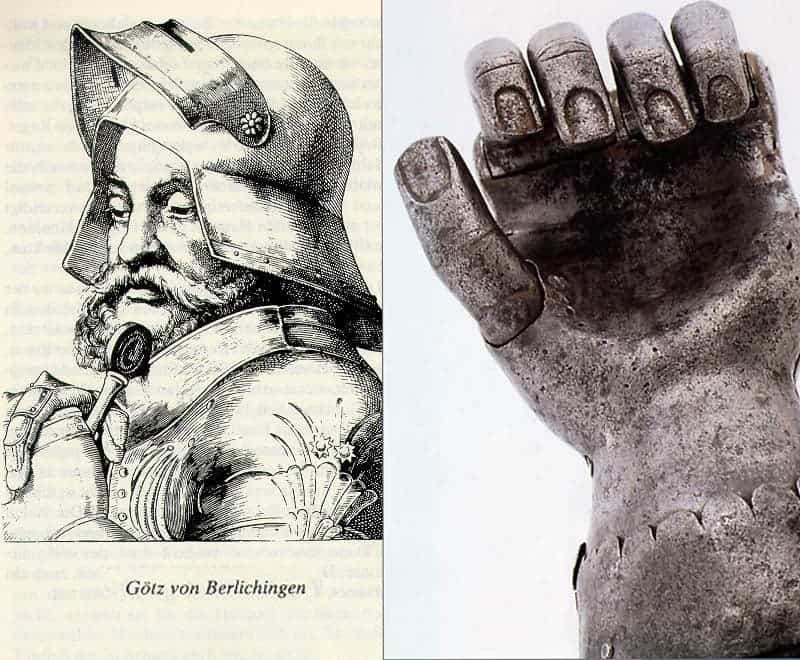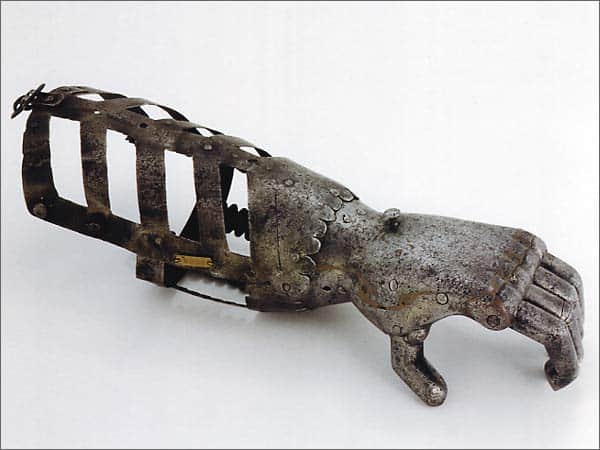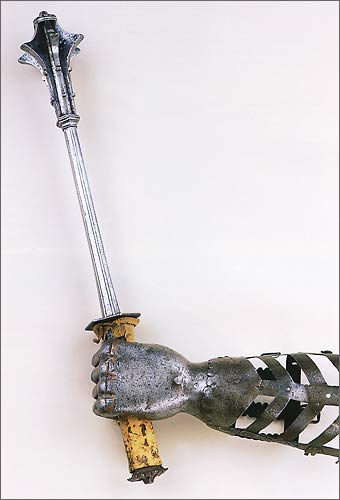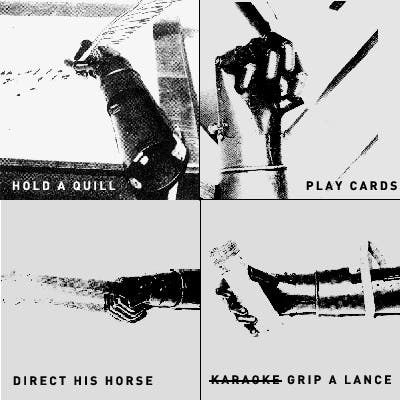Götz von Berlichingen was a renowned late-Medieval German mercenary knight employed by the lords and kings of the time to do their bidding. In 1503, when von Berlichingen was only 23, the knight lost one of his arms during the battle of Landshut. Considering this was the XVIth-century, it would sensible to imagine that he should have been content with a hook prosthetic, if he managed to survive the gangrene. In any event, surely his fighting days must have been behind him following this major setback. Wrong!
The brave knight not only survived his injuries but he was also fitted with a new iron hand with a grip that allowed von Berlichingen to hack and slash at will for many years after.
The knight with an iron hand
His first prosthetic hand was rather basic, though functional. The fingers and palm could only be acted in two ways by the hinges: either the mechanism curled inward into a sword-holding grip, or it was loosened for a stale handshake. For all practical purposes, it was pretty good.
Some attention was also given to aesthetics, with craftsmen engraving fingernails and even wrinkles to give the prosthetic a more natural look — although it had the opposite effect. Imagine visiting your local tavern, only to see a fierce warrior sipping ale in a dark corner with his good hand, with a black iron fist resting on the table. Now, that’s a sight to behold!
He may have not been as dexterous as he once was, but armed with his iron hand von Berlichingen was still a force to be reckoned with. He had his own band of mercenary thugs which he employed to fight, kidnap the rich for ransom, rob merchants on the high road for wares, and enforce loan sharking. He also was known as a patron of the peasantry and destitute, as he would often hand out cash and supplies to the poor robbed from the rich. This lent him the reputation of a sort of Bavarian Robin Hood.
Berlichingen led a group of rebels against the Holy Roman Empire in 1525 (he was outlawed in the kingdom twice!), fought the campaign against the Ottoman Empire of Suleyman the Magnificent under Emperor Charles V in 1542, and served under Francis I in the 1544 Imperial invasion of France.
With a sizable chest of cash after years of looting, von Berlichingen upgraded to a new iron arm. Version 2.0 was splendid, equipped with joints at each knuckle and spring-loaded mechanisms to lock fingers into place, in a manner similar to the ratchet-and-pawl system used in handcuffs.
This allowed Götz von Berlichingen not only to use his right arm prosthetic with unparalleled control in battle, but also to hold the reins of his horse, play cards, write with a quill, or drink from a mug of ale. It must have also packed a hell of a punch. The new arm also looked much more authentic, as you can notice from the pictures.
Remember, this revolutionary prosthetic was made in the XVIth-century. Unfortunately, there is no record of the mastermind who designed and manufactured von Berlichingen’s right iron hand.
“Götz of the Iron Hand” fought until the venerable age of 64 when he retired. Oddly enough for a man such as him, he died in his sleep in 1562, aged 82. He left three daughters and seven sons to carry on the Berlichingen name. The knight is thought to have said about his iron hand that it “rendered more service in the fight than ever did the original flesh.”
Before he passed away, the Iron Hand penned an autobiography that inspired Johann Wolfgang von Goethe (yes, the Goethe) to write Götz von Berlichingen, a dramatic play based on Berlichingen’s life published in 1773. The play itself is romanticized, depicting a rough, but sensible Götz von Berlichingen who dies young. But there is one hilarious line in the play that, by all accounts, seems to be based on a historical account. When a Bishop once demanded his surrender, Götz von Berlichingen thundered back: “Er kann mich im Arsche lecken!” which in rough translation means “Kiss my ass!” The phrase became somewhat popular, known among Germans to this day as the Swabian Salute.
Götz von Berlichingen was definitely a larger-than-life figure, and his legacy lives on. For one, there’s the Swabian Salute. On the other hand (sorry not sorry), his famous prosthetic is still preserved and on display in the museum at his old Jagsthausen castle.
From an engineering perspective, the Iron Hand is a fantastic display of ingenuity. Thankfully, we’ve come a long way since. Today, we have prosthetic hands that actually relay back touch and can be controlled with fantastic accuracy by the mind alone. Some researchers are even printing fully functional prosthetic hands for less than $100.








